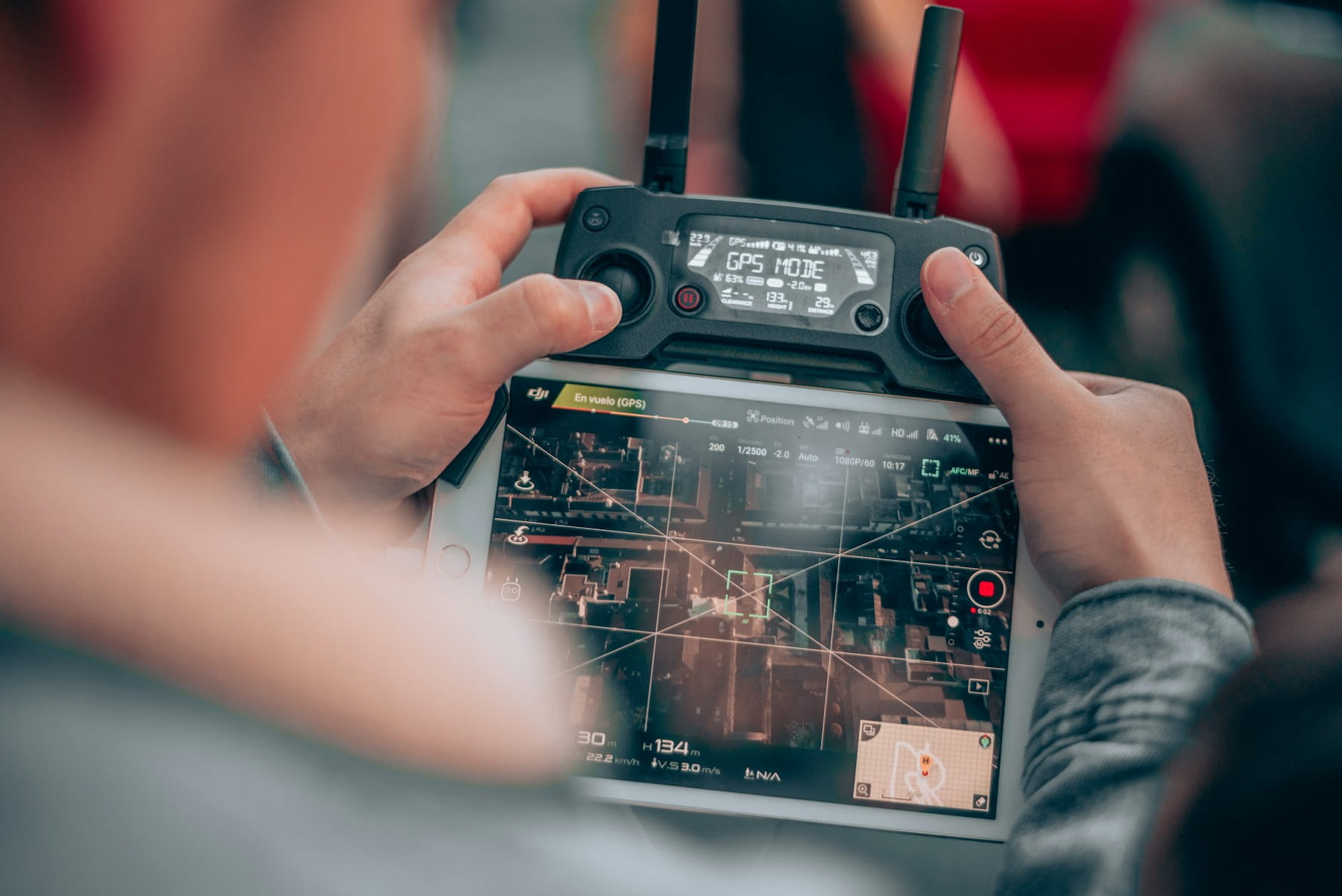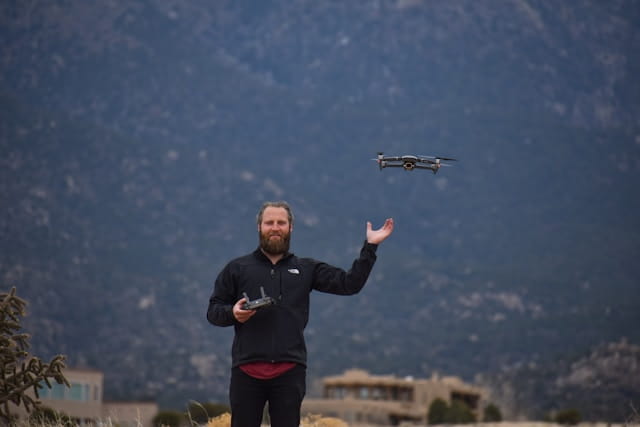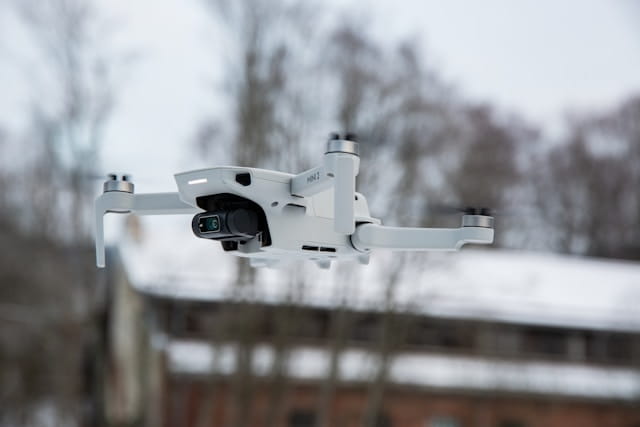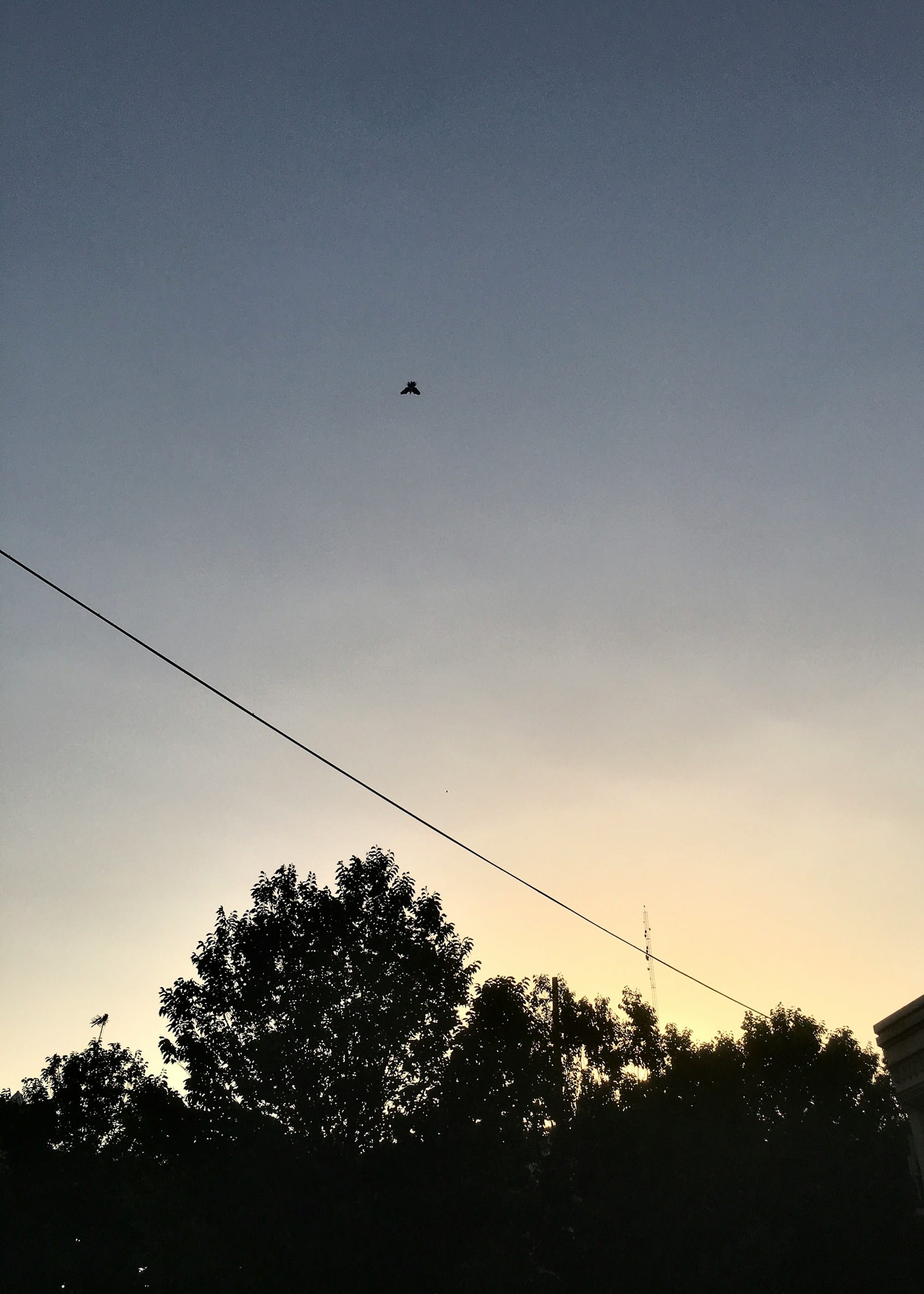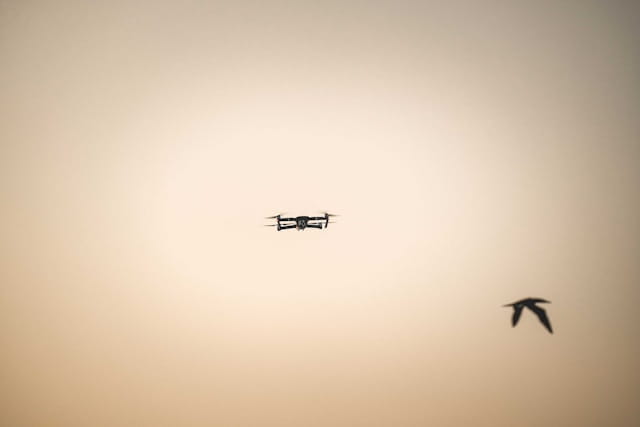Learn which drone license you need based on your flying purpose—recreational or commercial—and understand FAA requirements like Part 107, registration, and special waivers for safe, legal drone operations.
Getting into drone operations can feel overwhelming when you're staring at a maze of regulations and license requirements. The simple question "what drone license do i need?" doesn't have a simple answer—it depends on your specific situation, the type of operations you plan to conduct, and where you intend to fly.
The licensing landscape varies dramatically between recreational hobbyists who want to capture scenic footage and commercial operators conducting complex industrial inspections. Understanding which path applies to your situation can save time, money, and potential legal headaches down the road.
Table of contents
- Understanding the basics of drone licensing
- Recreational drone operations
- Commercial drone licensing requirements
- Part 107 remote pilot certificate explained
- Public safety and government operations
- International drone licensing considerations
- Drone registration requirements
- Special authorizations and waivers
- License maintenance and renewal
- Common licensing mistakes to avoid
- Choosing the right licensing path
- Implementation considerations
Understanding the basics of drone licensing
The Federal Aviation Administration (FAA) treats unmanned aircraft systems (UAS) differently based on their intended use. This creates distinct regulatory pathways that determine what licensing you need.
Recreational flying operates under different rules than commercial operations. The distinction isn't always obvious—if you post drone footage on social media and monetize it, you've crossed into commercial territory. Even volunteer work for non-profits can require commercial licensing if the organization benefits financially.
Weight plays a crucial role in licensing requirements. Drones weighing 0.55 pounds (250 grams) or more require registration with the FAA, regardless of whether you fly recreationally or commercially. But registration alone doesn't constitute a license—it's simply putting your drone on the FAA's radar.
The complexity increases when you consider special use cases. Educational institutions, public safety agencies, and government entities often have different pathways available. Some operations require additional authorizations beyond basic licensing.
Understanding these fundamentals helps narrow down which specific requirements apply to your situation. The FAA's approach focuses on risk management—higher-risk operations face more stringent requirements.
Recreational drone operations
Recreational drone flying represents the most straightforward licensing scenario. Under the Exception for Recreational Flyers (formerly known as the hobbyist exemption), recreational pilots don't need traditional licenses but must follow specific rules.
The key requirement for recreational operations is passing The Recreational UAS Safety Test (TRUST). This free online test covers basic safety knowledge and takes most people 30-45 minutes to complete. You only need to take TRUST once, and the certificate doesn't expire.
TRUST covers topics like airspace restrictions, weather considerations, and emergency procedures. The test draws from materials provided by FAA-approved test administrators, including the Pilot Institute, which offers comprehensive study materials alongside the actual test.
Recreational flying rules include:
- Flying below 400 feet in uncontrolled airspace
- Keeping the drone within visual line of sight
- Flying only during daylight hours
- Avoiding controlled airspace without authorization
- Never flying over people not directly participating in the operation
- Following community-based safety guidelines from recognized organizations
The recreational exemption works well for weekend warriors capturing family events or nature photography. However, the moment you cross into any commercial activity—even selling a single photo—you need commercial licensing.
Some recreational pilots assume they can fly anywhere as long as they follow basic safety rules. This misunderstanding leads to violations, especially around airports and restricted areas. The B4UFLY app helps recreational pilots check airspace restrictions before flying.
Recreational operations can't involve carrying property for compensation or hire. This means you can't deliver packages, even for free, under recreational rules. Such activities require commercial authorization.
Commercial drone licensing requirements
Commercial drone operations require a Part 107 Remote Pilot Certificate from the FAA. This applies to any drone operation conducted for business purposes, including real estate photography, agricultural monitoring, infrastructure inspection, and delivery services.
The Part 107 certificate process involves more than just passing a test. Candidates must demonstrate knowledge of aeronautical decision-making, airport operations, and federal aviation regulations. The exam covers topics that many new commercial pilots find challenging without proper pilot training.
Part 107 privileges allow commercial operators to:
- Conduct business operations within regulatory limits
- Fly in certain controlled airspace with proper authorization
- Operate multiple drones (though not simultaneously without additional certification)
- Carry payloads for commercial purposes
- Conduct operations for compensation or hire
The commercial pathway opens doors to various specialized operations. Agricultural drone pilots can monitor crop health and apply treatments. Construction companies use drones for site surveys and progress monitoring. Media companies capture aerial footage for films and advertisements.
Commercial licensing comes with ongoing responsibilities. Pilots must maintain current knowledge of regulations, complete recurrent training every 24 months, and document flight operations according to FAA compliance requirements.
Some commercial operations require additional authorizations beyond basic Part 107 certification. Night operations, flights over people, and operations beyond visual line of sight each have specific requirements that go beyond standard commercial licensing.
Part 107 remote pilot certificate explained
The Part 107 Remote Pilot Certificate serves as the foundation for most commercial drone operations. Obtaining this certificate requires passing a comprehensive aeronautical knowledge test at an FAA-approved testing center.
Test coverage areas include:
- Applicable regulations relating to small unmanned aircraft system rating privileges, limitations, and flight operation
- Airspace classification and operating requirements
- Aviation weather sources and effects of weather on small unmanned aircraft performance
- Small unmanned aircraft loading and performance
- Emergency procedures
- Crew resource management
- Radio communication procedures
- Determining the performance of small unmanned aircraft systems
- Physiological effects of drugs and alcohol
- Aeronautical decision-making and judgment
- Airport operations
- Maintenance and preflight inspection procedures
The test consists of 60 multiple-choice questions, and candidates need a score of 70% or higher to pass. Most people spend 20-40 hours studying before attempting the exam, though this varies based on prior aviation experience.
Study materials range from free FAA resources to comprehensive commercial courses. The FAA provides a Remote Pilot Study Guide and sample questions. Many pilots find that combining official materials with third-party courses provides the most thorough preparation.
After passing the written exam, candidates complete an online application through the Integrated Airman Certification and Rating Application (IACRA) system. The FAA conducts a background check that typically takes 2-6 weeks to complete.
Part 107 certificates are valid for 24 months. Renewal requires either retaking the knowledge test or completing approved recurrent training through an online course. Most pilots choose recurrent training as it's more convenient and less stressful than retesting.
The certificate allows operations under standard Part 107 rules but doesn't automatically authorize special operations. Flying at night, over people, or beyond visual line of sight requires additional training and endorsements.
Public safety and government operations
Public safety agencies and government entities have unique drone licensing options that differ from standard recreational and commercial pathways. These operations often involve critical missions where standard restrictions might interfere with public safety objectives.
Public aircraft operations (PAO) represent one alternative pathway. This classification allows government entities to operate under different rules than civilian aircraft, but requires meeting specific criteria and obtaining proper authorizations.
Public safety operations include:
- Search and rescue missions
- Fire suppression and monitoring
- Law enforcement surveillance and investigation
- Emergency response coordination
- Infrastructure monitoring and assessment
- Border security operations
The Certificate of Waiver or Authorization (COA) process provides another pathway for government operations. COAs can authorize operations that wouldn't be permitted under standard Part 107 rules, such as flights in controlled airspace or operations beyond visual line of sight.
Government pilots can choose between different licensing paths depending on their mission requirements. Some agencies prefer Part 107 certification for its flexibility and straightforward requirements. Others pursue COAs or PAO designations when standard rules don't accommodate their operational needs.
Training requirements for public safety drone operations often exceed standard commercial requirements. Many agencies develop specialized training programs that address their specific mission profiles and risk management needs.
Inter-agency coordination becomes important when multiple government entities operate drones in the same area. This is particularly relevant during large-scale emergency responses where federal, state, and local agencies might all deploy aircraft simultaneously.
International drone licensing considerations
Drone licensing requirements vary significantly between countries, creating challenges for operators who want to fly internationally. What works in the United States doesn't automatically translate to authorization in other jurisdictions.
European Union drone regulations follow the EASA (European Union Aviation Safety Agency) framework, which classifies operations based on risk categories rather than the commercial/recreational distinction used in the United States. The EU system includes Open, Specific, and Certified categories with different requirements for each.
International licensing considerations include:
- Country-specific registration requirements
- Operator certification versus pilot certification
- Insurance and liability requirements
- Import/export restrictions for drone equipment
- Operational limitations that differ from home country rules
- Language requirements for certification materials
Some countries maintain mutual recognition agreements that allow foreign-licensed pilots to operate under certain conditions. However, these agreements are limited and often include restrictions that don't apply to domestic operators.
Business travelers who want to bring drones abroad face particular challenges. Many countries require advance authorization for foreign drone operations, even for simple photography work that would be routine domestically.
Drone manufacturers increasingly design products to meet international standards, but regulatory compliance remains the operator's responsibility. Some drones automatically adjust flight restrictions based on GPS location, but these geo-fencing systems don't replace proper licensing requirements.
Professional drone service companies operating internationally often maintain multiple licenses and certifications. This approach ensures compliance across different jurisdictions but increases operational complexity and costs.
Drone registration requirements
Registration serves as a fundamental requirement that applies regardless of your specific licensing path. All drones weighing 0.55 pounds or more must be registered with the FAA before their first flight.
The registration process differs for recreational and commercial operators. Recreational pilots can register multiple drones under a single registration number, while commercial operators must register each aircraft individually.
Registration requirements include:
- Valid registration before operating any covered aircraft
- Registration renewal every three years
- Proper marking of aircraft with registration number
- Maintaining current contact information with the FAA
- Registration fees ($5 for recreational, $5 per aircraft for commercial)
Registration numbers must be displayed on the aircraft in a manner that's visible without disassembly. For drones with removable batteries, the marking must be visible when the battery compartment is open. This ensures the number remains accessible even if the aircraft loses external components during flight.
Lost or destroyed drones require prompt notification to the FAA. This prevents registration numbers from being misused and helps maintain accurate records of active aircraft.
Some operators mistakenly believe that registration alone authorizes flight operations. Registration is simply an administrative requirement—it doesn't replace licensing requirements for recreational or commercial operations.
International visitors who want to operate drones in the United States must also complete registration requirements. This applies even to short-term visitors who only plan limited recreational flying.
Special authorizations and waivers
Standard drone licenses cover basic operations within established regulatory limits. More complex operations require additional authorizations through the FAA's waiver and authorization system.
Part 107 waivers allow commercial operators to exceed specific regulatory limitations after demonstrating equivalent safety measures. Common waiver requests include night operations, flights over people, and operations beyond visual line of sight.
Common waiver categories include:
- Night operations (previously required waiver, now requires additional training)
- Flight over people in certain categories
- Operations from a moving vehicle or aircraft
- Flight at altitudes above 400 feet AGL
- Operations in controlled airspace
- Multiple aircraft operations by a single pilot
- Operations beyond visual line of sight
The waiver application process requires detailed safety analysis and risk mitigation procedures. Applications must demonstrate how the proposed operation maintains equivalent safety to standard Part 107 operations.
Processing times for waivers vary significantly based on complexity and FAA workload. Simple waivers might be approved within weeks, while complex operations requiring extensive safety analysis can take months.
Some authorizations that previously required waivers are now available through streamlined processes. Night operations, for example, now require additional training and equipment rather than individual waivers for each operation.
Recreational operators generally can't obtain waivers to exceed regulatory limitations. The recreational framework provides specific rules with limited flexibility for variations.
License maintenance and renewal
Drone licenses and certifications require ongoing maintenance to remain valid. This includes both formal renewal requirements and staying current with regulatory changes.
Part 107 certificates expire every 24 months and require either retesting or completion of approved recurrent training. Most commercial pilots choose recurrent training as it's more convenient and provides focused updates on regulatory changes.
Maintenance requirements include:
- Certificate renewal every 24 months for Part 107 pilots
- Staying current with regulatory changes and updates
- Maintaining proficiency through regular flight operations
- Updating contact information with the FAA when it changes
- Completing additional training for new authorizations or endorsements
The recurrent training option covers regulatory updates and safety improvements that have been implemented since initial certification. This approach ensures pilots stay informed about evolving requirements without repeating the full knowledge test.
Some specialized authorizations require additional recurrent training beyond basic Part 107 renewal. Night operation endorsements, for example, might require periodic review of low-light flying techniques and equipment requirements.
Pilots who let their certificates expire must retake the full knowledge test rather than completing recurrent training. This provides strong incentive to maintain current certification status.
Professional pilots often maintain detailed training records that exceed FAA requirements. This documentation supports insurance claims, customer confidence, and regulatory compliance during inspections.
Common licensing mistakes to avoid
New drone operators frequently make licensing mistakes that can result in violations, fines, or operational restrictions. Understanding these common errors helps operators avoid regulatory problems.
One frequent mistake involves misunderstanding the recreational versus commercial distinction. Many pilots assume that casual use automatically qualifies as recreational, but any operation that provides value to a business crosses into commercial territory.
Common licensing errors include:
- Operating commercially without Part 107 certification
- Assuming registration equals authorization to fly
- Flying in controlled airspace without proper authorization
- Exceeding recreational operation limitations
- Failing to renew certificates before expiration
- Operating internationally without checking local requirements
- Misunderstanding waiver requirements for special operations
Another common error involves airspace authorization. Many pilots don't realize that certain areas require advance approval even for routine operations. The FAA's LAANC (Low Altitude Authorization and Notification Capability) system streamlines some authorizations, but pilots must still request approval before flying.
Weight-based requirements catch some operators off guard. Drones that seem small might still require registration if they exceed the 0.55-pound threshold. This includes the weight of batteries, cameras, and any other equipment installed on the aircraft.
Documentation requirements present another challenge. Commercial operators must maintain records of flight operations, aircraft maintenance, and pilot currency. Poor recordkeeping can complicate insurance claims and regulatory compliance.
Some pilots attempt to use recreational rules for activities that clearly benefit businesses. Volunteer work for non-profits, real estate photography, and social media content creation often require commercial licensing even when no direct payment is involved.
Choosing the right licensing path
Selecting the appropriate licensing path depends on your intended operations, risk tolerance, and long-term goals. The decision affects both immediate requirements and future flexibility.
Recreational licensing works well for hobbyists who want to fly for personal enjoyment without any commercial intent. The TRUST certificate is free, quick to obtain, and provides access to most airspace under appropriate conditions.
Commercial licensing opens doors to business opportunities but comes with additional responsibilities and costs. Part 107 certification requires more study time, testing fees, and ongoing currency requirements.
Decision factors include:
- Intended use of drone operations
- Frequency and complexity of planned flights
- Airspace where you intend to operate
- Need for special authorizations or waivers
- Business or insurance requirements
- Long-term operational goals
Some operators start with recreational licensing and later pursue commercial certification as their interests develop. This progression works well for photographers who initially fly for personal projects but later want to offer professional services.
Business requirements sometimes dictate licensing choices. Insurance policies often require specific certifications, and clients may specify licensing requirements in contracts. Government contractors typically need commercial licensing regardless of the specific work being performed.
Geographic considerations also influence licensing decisions. Operators near airports or in complex airspace might benefit from commercial training even for recreational use. The additional aeronautical knowledge helps with airspace navigation and risk management.
Professional pilot training programs often exceed minimum FAA requirements. These programs provide valuable operational knowledge that supports safe and efficient drone operations regardless of the specific licensing path chosen.
Implementation Considerations
Obtaining the appropriate drone license transforms regulatory requirements into operational capabilities. This process requires understanding different licensing pathways, completing required training, and establishing systematic compliance procedures.
Organizations implementing commercial drone operations benefit from understanding compliance requirements, airspace regulations, and operational limitations before pursuing certification. Successful implementations typically start with clear operational objectives, appropriate licensing selection, and comprehensive training programs.
Professional operators leverage operations management platforms to coordinate licensing requirements, maintain pilot certifications, and ensure regulatory compliance across all operational activities while supporting business growth and service expansion.
In Summary
Mastering drone licensing requirements provides the foundation for legal and professional unmanned aircraft operations. From recreational TRUST certification to commercial Part 107 credentials and specialized authorizations, understanding appropriate licensing paths ensures compliance while enabling operational capabilities.
The complexity of licensing decisions demands attention to operational objectives, regulatory requirements, and long-term business goals. As drone regulations evolve and operational opportunities expand, operators who invest in proper licensing and training position themselves for sustained success and regulatory confidence.
Organizations implementing systematic licensing and training programs today are establishing operational frameworks that support safe flight operations, regulatory compliance, and professional service delivery. The integration of appropriate licensing with comprehensive operational management creates the foundation for market leadership in commercial drone operations.
Ready to Streamline Your Licensed Drone Operations?
Join professional operators who have simplified their compliance and operational management through comprehensive platforms designed for licensed drone pilots. Whether you're completing your Part 107 certification, managing multiple licensed pilots, or scaling commercial operations, systematic foundations enable efficient and compliant operations.
Start your free trial today — no credit card required.
Or book a demo to see how DroneBundle integrates pilot certification tracking, compliance management, and operational planning in a platform designed specifically for licensed commercial drone operations.
